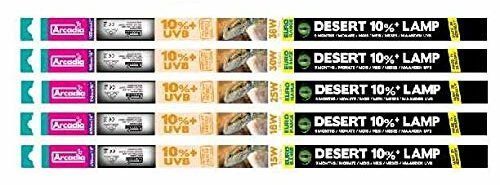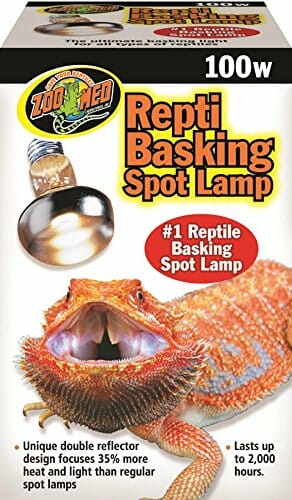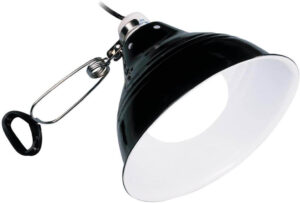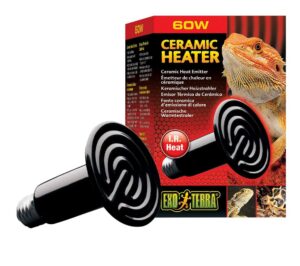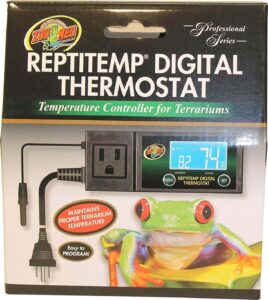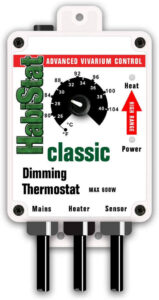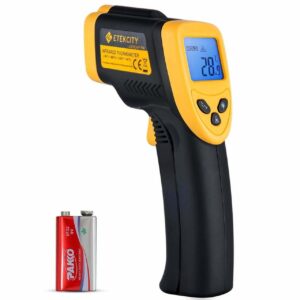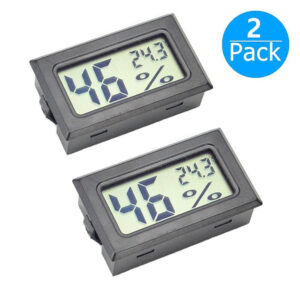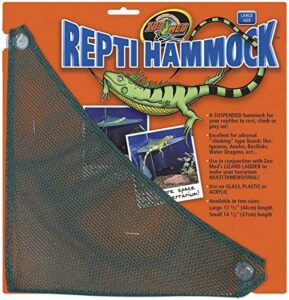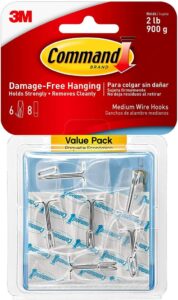Bearded Dragon Equipment
This is the bearded dragon equipment we use, or have used. It’s a collection of the various bits you’ll need to keep your beardie happy, safe and healthy.
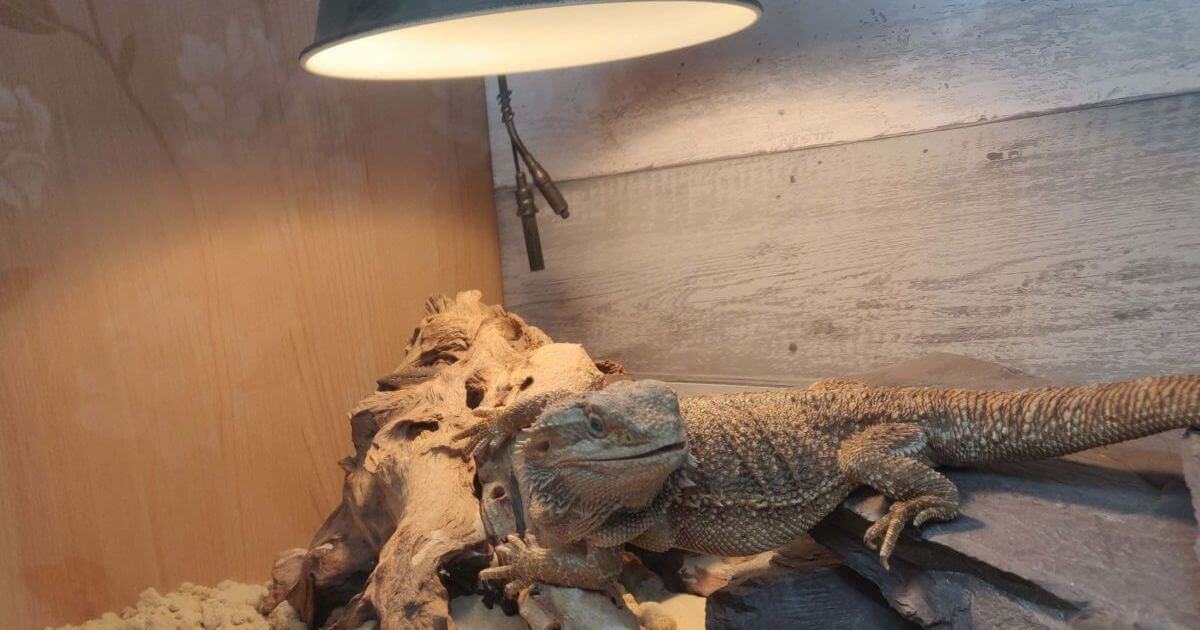
Last Updated: February 4th, 2023
By: Steve
Table of Contents
Bearded Dragon Equipment
It’s no secret that bearded dragons require some pretty specialist equipment in order to be safe, comfortable, healthy and happy. Throughout the site we talk about various pieces of bearded dragon equipment that’s required in various different contexts, so in this page, we put them all together in one long list for you to see.
Links in this post will take you directly to Amazon or other place you can buy the equipment for a bearded dragon. If you purchase items through these links we will be paid a small commission for referring you but it does not affect the price you pay in any way. Most of the equipment we recommend here we use ourselves and know it’s reliable. So if you’re looking for bearded dragon equipment, you’ve come to the right place.
Vivarium / Terrarium / Tank
As we’ve discussed in various articles, the Bearded Dragon requires a warm environment in which to live. They need a house that’s significantly warmer and brighter than most of us would be prepared to live in. So, they need a special enclosure, called a vivarium in which to live.
In addition to needing a vivarium, they have some fairly specific vivarium requirements. Just any old lizard vivarium isn’t going to be ideal. For example, chameleons prefer a high vivarium with lots of things to climb on. Bearded Dragons on the other hand need a longer vivarium that isn’t as high. This is in order to get the necessary temperature differences from one end to the other.
A vivarium for a bearded dragon needs to be at least 4 feet ( 48 inches ) long, around 2 feet high and 2 feet deep. The vivariums linked here will do nicely.
Repti-Life 4ft Oak Veneer Vivarium
Repti-life are a popular choice in the UK and provide some solid vivariums. The oak veneer looks nice in any room and being wooden it holds the warmth a fair bit better than a glass tank. The front sliding doors make it nice and easy to get your bearded dragon in and out. This is the type of vivarium we use ourselves.
Carolina Custom Cage
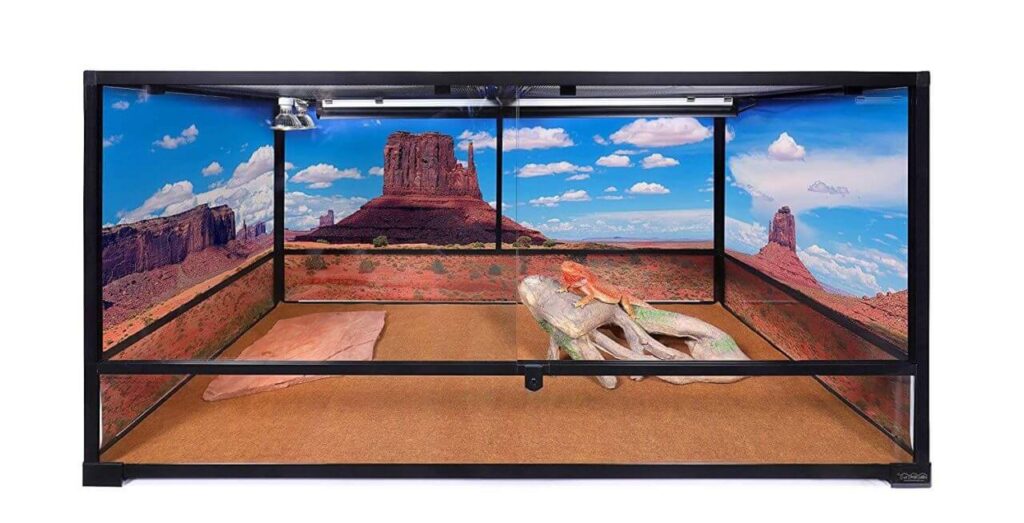
The best size for adult bearded dragons
Carolina Custom Cages are, from what we can see, pretty much the only vivarium manufacturer in the US that make the correctly sized vivarium for a bearded dragon. The vivarium shown on the left is a 48″ x 18″ x 24″ which is the minimum size we’d recommend. Clicking the image or the title will take you to Amazon where you can see the latest prices and order.
Most US vivariums are measured in gallons rather than width and height. Generally speaking a 75 gallon tank is the absolute minimum you’ll want. Preferably 120 gallon to get the full width that’s needed. The tank listed above on Amazon US is measured at 4 feet wide and is why we recommend it. We’ve no experience with the actual tank ourselves (since we’re in the UK). It does get good reviews on Amazon as well.
You can also purchase a vivarium second hand (used) if you prefer. We have a post about what to look out for when purchasing a second hand vivarium here at Buying A Vivarium – Which Is Better, New Or Used?
UVB Strip Lights (Linear Lights)
You’re going to need various lights for your bearded dragons enclosure. We have a full article at Bearded Dragon Lighting for you to check which lights you need. If you’ve read that and know what you need but aren’t sure which specific ones to get, here’s a few suggestions for you.
UVB strip lights should be approximately three quarters of the length of your vivarium. They should be positioned such that the lamp starts at the edge of the vivarium where the basking area is. This gives maximum UVB exposure when basking. This leaves approx one quarter of the tank, at the cooler end, with less UVB exposure and enables your dragon to be more ‘shaded’ when they’re not basking.
If you’ve chosen a 48″ / 4 foot vivarium then approx 36″ / 3 foot UVB lamp is required. The one listed below is close at 34″ and is the recommended strength and fixture if buying new. You can also get T8 fixtures, but these UV strips are larger in diameter. They tend to produce less UVB as a result. T5 strip lights can be placed outside the vivarium, for example on a mesh at the top. T8 lights should be placed inside the vivarium. For wooden tanks we recommend T8 lights, for glass tanks with a mesh top, you must use T5.
Reptisun T5 HO 10% UV Strip Light
A T5 is absolutely essential if you’re mounting the UVB strip light on mesh above the vivarium. A T8 will not produce sufficient light for this situation. T8’s must be mounted inside the vivarium, and are more common in the UK.
T8 UVB Strip Light
Remember that UVB lights need changing every 6 to 9 months, unless you have a UVB detector and can determine how much UV is being output from the lamp. They degrade with time. If it’s over 9 months since you last changed your UVB there’s a strong chance your dragon isn’t getting enough.
Also when choosing your UVB lights, remember that coil lamps are absolutely not recommended. Also remember to look for the desert specification – so either a 10% or 12% label will be needed.
UVB Strip Light Controller
In order to actually operate the UVB lamp you’ll need a specialist controller which provides the right current AND fixture types for the size of tube you have purchased. This is an annoyingly specific topic. The key information though is to make sure that you make a note of the wattage of the lamp you’re going to be using and the fitting size. Then find a controller that matches.
In our case, we have a 30W 36 inch T8 UVB lamp. So we need a T8, 30W controller. The link to this controller is shown below by clicking the picture. Do bear in mind that’s the specific one for us and yours may be different. Nevertheless, clicking the picture will get you to the right section of Amazon. From there you can browse around for the right one for your needs.
Arcadia T8 30W 36″ UVB Controller
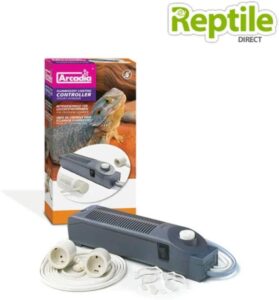
You may also notice this comes with the fittings at either end for your strip light and some clips to attach the tube to the top of the vivarium. Everything you need for your UVB setup except some timers (which we’ll go into below).
If you’re in the USA (or rest of the world) clicking the picture will take you to Amazon.com and a different product. We can’t say we’ve used the Carolina Custom Cages UVB attachment. It looks like it would perform admirably for most American setups.
Basking Lamp
To maintain the temperature in your vivarium you’re going to need a basking lamp. You’ll also want a thermometer (see later) to make sure you’re not making the basking area too hot. Something like the lamp below will be ideal for the basking area.
We prefer the lamps such as those above with the frosted glass on the front as this gives a more even spread of warmth within the basking area and a softer, more natural glow. The clear glass bulbs often produce strips of more intense heat and light where the filament is glowing. But it’s a matter of personal choice really.
You may need to adjust the height of the lamp within the vivarium to obtain the right temperature at the basking spot and allow for the correct temperature gradient across the vivarium. Always make sure that your bearded dragon can’t reach (or jump on) any lamps though as they are very hot by design and will burn them.
Have a look at Bearded Dragon Heating And Lighting for more details about the requirements for this.
If you find your vivarium is not getting hot enough you may want to follow the link for some tips and tricks to help.
Basking Lamp Reflector
You’re going to need something to hold the bulb in place above, or inside your vivarium. A standard bulb holder isn’t a good idea because they’re generally made of plastic and are likely to melt or catch fire. You don’t want that. The bulb holder also needs some kind of hood over it to reflect as much heat and light as possible back into the vivarium.
The one we’ve chosen is the ExoTerra Glow Light Reflector. We like this one because it is coated on the inside with a glow in the dark substance that mimics a bit of moonlight during the first part of the night time. It’s also super robust and just works well. It comes with its own switch so you can operate it manually but we use ours with a dimming thermostat – listed below.
Ceramic Heat Emitter
We find we don’t need one of these overnight as the lizards are kept in the lounge area which has room heating. Even during the winter the temperature in the tank overnight doesn’t fall below 22 degrees. However, these ceramic heat emitters can be used where the overnight temperature falls too low, and can also be used to boost the temperature in the whole tank during the day if your basking temperature is correct but the rest of the tank ends up being too cool. This can be particularly tricky in really large tanks.
Use these in place of an infra red or red light overnight – bearded dragons should not have any light on overnight. These can also be used with the cheaper Pulse Thermostats whereas lamps cannot. This can be useful if you want different temperatures overnight versus day (which you do). Two separate timer switches – one for night and one for day, along with two separate thermostats (see later) will sort this out for you.
Timers
Thermostats
As mentioned in the Bearded Dragon Heating And Lighting article, there are three main types of thermostats. The on/off thermostat is the ONLY one that is suitable for use with a Mercury Vapour Bulb. We don’t use MVB and have a dimming thermostat which is why that’s the only one we’ve listed here. You can find them on Amazon though but we prefer the standard basking lamp with a dimming thermostat. The dimming thermostat provides a more natural environment and saves the life of your bulb as well as the electricity bill. Once the environment reaches the correct temperature the bulb is gradually dimmed down to keep it at the set temperature. With an on/off thermostat the environment gets hot, then cooler, then hotter, then cooler. Just not as good.
Finally there’s the pulsing thermostat. This switches the heat source on and off very quickly to provide an average temperature. These are OK with ceramic heat emitters listed above but not suitable for use with any kind of lamp.
Finally, with the thermostats there are normal temperature range which are suitable for most reptiles. But for bearded dragons you’ll need a high range thermostat as the normal range won’t let the temperature get warm enough. The high range will allow you to set the temperature to a maximum of 42 degrees celsius. This is too warm for a bearded dragon of course but the normal range stats only go up to about 37 degrees which isn’t warm enough. This information actually seems to apply mostly to the UK Thermostats. The American ones I’ve found and listed all go up to the higher temperatures anyway.
Nevertheless, the picture on the left is the one we chose in the UK and have been extremely happy with it.
Thermometers / Combination ThermHygrometer
There’s much debate on which thermometers should be used in the vivarium. Most people agree that the round stick on types aren’t that great. Their accuracy is somewhat poor and they’re not easy to read unless you’re right up close to the vivarium.
Many people swear by the infrared gun technology these days and if we were looking to make a new purchase we’d probably look at this. But they are expensive and the infrared guns only deal with temperature. This means you’ll need a separate meter to read your humidity. See our article Humidity And Bearded Dragons for more information on the correct levels of humidity for your bearded dragon tank.
So, the link above is the infrared temperature gun that many people online rave about. If you can afford it there’s no doubt that it’s the most accurate way of reading the temperature at various spots within the vivarium. We, however, have 2 combination thermo-hygrometers. One is at each end of the tank so we can keep an eye on the temperature and humidity in both the warm and the cool end. They seem quite accurate when compared with other temperature measuring devices and the bearded dragon often sits in the basking end with her mouth agape so she’s showing us she’s warm enough. A link to those devices is available below by clicking the picture.
There’s also various items of furniture and things that I’ll add to this article in the future as they can be handy to know where to get them too… But for now, that’s the essential kit you’ll need to house your bearded dragon safely, with links to the items that we’ve used ourselves where possible.
Hammocks / Ledges / Basking Areas
Bearded dragons love to get a bit of height (though not as much as Water Dragons or Chameleons for example) in order to survey their kingdom. In a vivarium this can be a bit of a problem, particularly if your Vivarium is mostly made of glass. It can be really awkward finding a ledge that fits or sticks in the right place. Fortunately, MagNaturals have thought of this and have produced ledges that stick to the glass using very strong magnets on the outside. You can position the ledge where-ever you want and give your bearded dragon some of that height they like.
Basking is an activity that bearded dragons do regularly, to rest and digest their food or survey their surroundings. A good, warm basking area is essential for your bearded dragon’s health. We’ve seen posts online fairly recently that suggest the surface temperature of your basking spot should be 120 Fahrenheit. This is wholly incorrect. That temperature will cause burns to the underside of your bearded dragon’s belly. It’s important therefore to find a material that will enable the dragon to bask under the basking lamp with the correct air temperature of around 105-110 Fahrenheit but that will not absorb too much of those rays and warm up. Stone or slate/tile therefore is not a good material for a basking spot. But a hammock, or a wooden decoration is a good choice. These don’t get as hot as a stone or metal (never use a metal object as a basking spot) and shouldn’t burn your dragon even though the heat lamp is providing a good strong heat.
We use a piece of sterilised driftwood for this purpose – but hammocks also work well.
Suctions Cups / Ways To Hold Up Hammocks
We don’t use hammocks ourselves as we mentioned above – however, we have heard very good things about the 3M Command Hooks which are a very cheap way. They’re often used for hanging up pictures on walls and such like, so they should carry the weight of your hammock and dragon. The only issue would be if you have some fancy background or something that isn’t smooth. Glass or Formica lining from walls and the front would of course be fine.
If you have an opinion on how to hang the hammock in your vivarium please let us know.
If you have any comments or questions please don’t hesitate to give us a yell in the comments below. We hope this article was useful for you. If you think we’ve missed anything please do get in touch and let us know and we’ll update the article.



